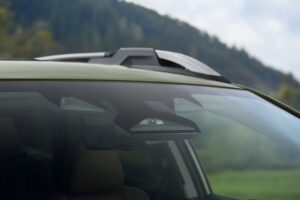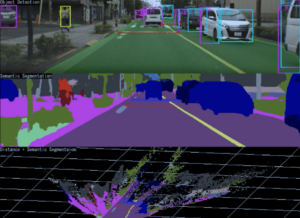
Subaru picks company to add AI-enabled tech into next-gen EyeSight
By Lurah Lowery onMarket Trends | Technology
Subaru Corp. has chosen Advanced Micro Devices (AMD)’s Versal AI Edge Series Gen 2 devices for the next-generation version of the company’s advanced driver assistance (ADAS) vision system EyeSight.
The EyeSight system is integrated into select Subaru models to enable safety features including adaptive cruise control, lane keep assist, and pre-collision braking. Subaru uses AMD’s adaptive system on a chip (SoC) technology in current EyeSight-equipped vehicles.
Subaru shared in September 2022 that it was developing a new generation of EyeSight that would use artificial intelligence (AI) to improve computer recognition in poor visibility. At the time, the OEM said the system would be introduced in 2025 model year Subarus.
AMD said it expects Versal Series Gen 2 silicon samples to be available by the first half of 2025 followed by evaluation kits and System-on-Modules samples in mid-2025 then production silicon in late 2025.
Subaru told Repairer Driven News it can’t comment about specific features and capabilities under development or expected timing.
“Subaru Corporation, Subaru of America’s parent company, continues to enhance the active and passive safety performance of Subaru vehicles as part of its goal to achieve ‘zero fatal road accidents in 2030,” Subaru said. “Enhancements to Subaru’s EyeSight technology are part of this effort. Subaru’s EyeSight technology has long been recognized for its effective performance in preventing accidents.
“In a recent evaluation of vehicle-to-vehicle front crash prevention performance, the Insurance Institute for Highway Safety (IIHS) tested 10 small SUVs and only the Subaru Forester, equipped with Subaru EyeSight Driver Assist Technology, achieved the highest possible rating.”
A previous study conducted by IIHS found that EyeSight reduces rear-end crashes with injuries by up to 85% in the U.S. while a study by Subaru based on data from Japan’s Institute for Traffic Accident Research and Data Analysis (ITARDA) has shown the accident rate of vehicles equipped with the technology is as low as 0.06% in Japan.
AMD says the newest adaptive SoCs bring pre-processing, AI inference, and post-processing together in a single device for end-to-end acceleration of AI-driven embedded systems. They also are designed to have ultra-low latency and functional capabilities for putting cutting-edge AI-based safety features in the hands of drivers, Subaru said.
“The demand for AI-enabled embedded applications is exploding and driving the need for single-chip solutions for the most efficient end-to-end acceleration within the power and area constraints of embedded systems,” said Salil Raje, senior vice president and general manager of AMD’s Adaptive and Embedded Computing Group, in a news release. “Backed by over 40 years of adaptive computing leadership, these latest generation Versal devices bring together multiple compute engines on a single architecture offering high compute efficiency and performance with scalability from the low-end to high-end.”
The Versal Series Gen 2 devices reportedly deliver new high-performance, edge-optimized products with capabilities and features for the design of automotive, aerospace, defense, industrial, vision, healthcare, broadcast, and pro AV markets, according to AMD.
“The single-chip intelligence can eliminate the need to build multi-chip processing solutions resulting in smaller, more efficient embedded AI systems with the potential for shorter time-to-market,” the release says.
AMD says customers can select the performance, power, and area footprints they want to achieve their particular application performance and safety targets.
Images
Featured image: A third forward-facing camera was added to Subaru’s EyeSight ADAS technology in certain 2023 Outbacks. (Provided by Subaru)
An illustration represents the integration of AI into EyeSight technology (Subaru Lab)
